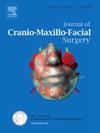作为死因的口腔癌与其他因素的比较:单个机构的长期随访经验。
IF 2.1
2区 医学
Q2 DENTISTRY, ORAL SURGERY & MEDICINE
引用次数: 0
摘要
头颈部鳞状细胞癌的幸存者面临多种原因导致的超额死亡率。然而,口腔癌患者全因死亡率的影响和模式仍不为人知。本研究旨在分析长期幸存者的死亡模式。我们对主要在三级癌症中心接受手术治疗的临床结节阴性(cN0)口腔癌患者进行了回顾性研究。共确定了 152 名患者。中位随访时间为 59 个月。共有 76 名患者死亡。34名患者(22.4%)死于原发性肿瘤复发,42名患者(27.6%)死于其他原因。最常见的竞争性死因是:心血管疾病(18 人;42.9%),其次是第二原发性癌症(SPC)(11 人;26.2%)。在与 SPC 相关的死亡病例中,肺癌占 54.5%(11 例中的 6 例)。接受前期手术治疗的 cN0 口腔癌患者有可能高度治愈原发癌,但却面临着因疾病复发以外的原因导致死亡的巨大风险。这些患者中有近三分之一死于竞争性死因,而竞争性死因是第四年随访期后的主要死因。这项研究强调了调整随访策略以应对这一特定人群风险的重要性。本文章由计算机程序翻译,如有差异,请以英文原文为准。
Comparison of oral cancer versus competing factors as cause of death: Single institution experience with long-term follow up
Survivors of head and neck squamous cell carcinoma face excess mortality from multiple causes. However, impact and patterns of all-cause mortality remains unknown in oral cancer patients. The aim of this study was to analyse these patterns in long-term survivors. We retrospectively studied clinically node-negative (cN0) oral cancer patients primarily surgically treated at tertiary cancer center. A total of 152 patients were identified. Median follow-up of our cohort was 59 months. A total of 76 patients died. Thirty-four (22.4%) patients died from primary tumor recurrence and 42 (27.6%) patients died from competing causes. The most common competing causes of death were: cardiovascular disease (n = 18; 42.9%), followed by second primary cancer (SPC) (n = 11; 26.2%). Lung cancer accounted for 54.5% (6 of 11) of SPC associated deaths. Patients with cN0 oral cancer treated with up-front surgery are potentially highly curable for index cancer but face significant risks of mortality from causes other than disease recurrence. Nearly one-third of these patients died from competing causes of death which are major cause of mortality after the fourth year of follow-up period. This study highlights the importance of adjusted follow-up strategies addressing this population specific risks.
求助全文
通过发布文献求助,成功后即可免费获取论文全文。
去求助
来源期刊
CiteScore
5.20
自引率
22.60%
发文量
117
审稿时长
70 days
期刊介绍:
The Journal of Cranio-Maxillofacial Surgery publishes articles covering all aspects of surgery of the head, face and jaw. Specific topics covered recently have included:
• Distraction osteogenesis
• Synthetic bone substitutes
• Fibroblast growth factors
• Fetal wound healing
• Skull base surgery
• Computer-assisted surgery
• Vascularized bone grafts

 求助内容:
求助内容: 应助结果提醒方式:
应助结果提醒方式:


